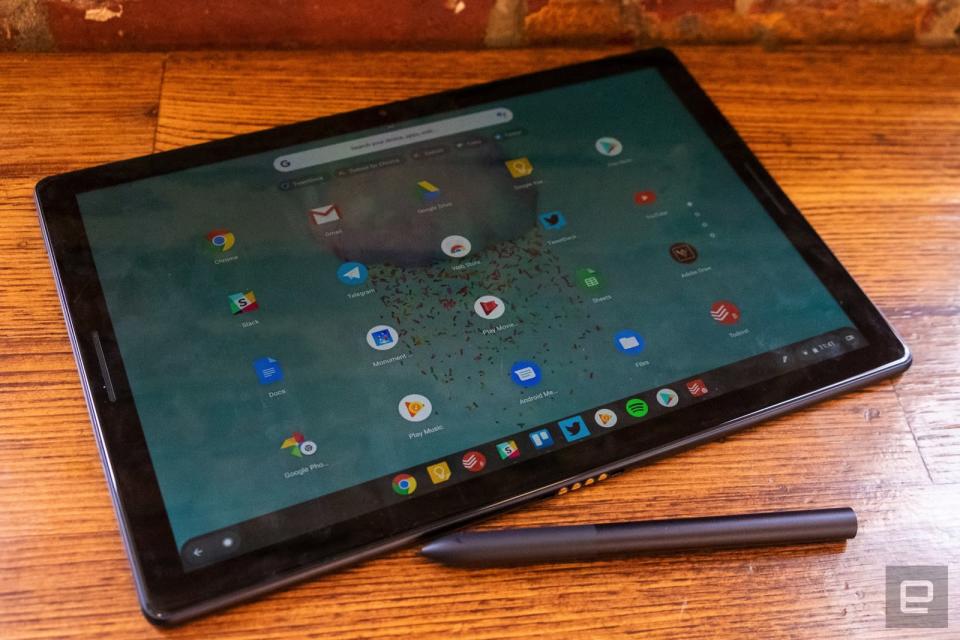Google Pixel Slate review: The burden of bad software
Back to the drawing board, Google.
Google's Pixel Slate is a maddening device to review. It's the latest in a line of premium, expensive Chrome OS devices from Google -- but the first that's a tablet, meant to compete with the iPad Pro and Surface Pro. Based purely on its hardware, the Pixel Slate should be up to the task: It has a lovely display, powerful hardware, elegant design and an accessory ecosystem to extend its capabilities. It also offers some things that Apple refuses to. Most significantly, the Pixel Slate has a full, desktop-class browser and more open hardware. (It recognizes external storage, like every other computer besides the iPad Pro.) But even though Chrome OS works great on laptops and should be enough for most people's needs, the Pixel Slate's software experience is confusing at best and frustrating at worst. At these prices (the cheapest Pixel Slate costs $599; the model I'm reviewing, $999), that makes it a tough device to recommend. The Pixel Slate makes a good first impression. It's by far the largest tablet Google has built, with a 12.3-inch screen. And despite the powerful internals (Intel's latest Y-series Core i5 processor, 128GB of storage and 8GB of RAM), the Slate is thin and relatively light. Even though it's a 1.6-pound device, it feels lighter and is easier to hold than I would have expected. No, it's not as impressively engineered as the new iPad Pro (Apple's 12.9-inch tablet is smaller than the Pixel Slate in every respect), but it's still an impressive piece of hardware. The screen is naturally the most important part of a tablet, and the Pixel Slate delivers without qualification. The 12.3-inch, 3,000 x 2,000 display is extremely bright and more pixel-dense than the Surface Pro or iPad Pro. Sure, the bezels are larger than those on the iPad Pro, but they're smaller than those found on most other tablets (and significantly smaller than those around the Pixelbook's screen). But that's the only knock I have here. Combined with some extremely powerful and clear front-firing speakers, the Pixel Slate is one of the best tablets out there for Netflix binges. Since Google sells the Pixel Slate without a keyboard, the touchscreen also needs to be smooth and responsive. For the most part, it succeeds: Swiping through websites in Chrome or notes, lists and conversations in web apps like Todoist, Keep and Slack all works fine. It's not as responsive as the iPad Pro, but it's generally solid. Unfortunately, the same isn't always true when you add Android apps to the equation, something I'll cover in more detail later. Other than the display, there's not much to note about the Pixel Slate's appearance. The blue-gray color scheme is tasteful and understated. The power button also hides a fingerprint sensor, which makes unlocking the Pixel Slate a breeze. Google asks you to set it up during the initial boot process, and I found it as fast and reliable as the fingerprint sensor on the Pixel 3 or the iPhone 8. Just like Microsoft and Apple, Google is selling an optional keyboard to go along with the Pixel Slate. Having some kind of keyboard is all but necessary: Chrome OS has been tweaked to work better with touchscreens, but it's definitely more useful with a traditional input device. The Pixel Slate Keyboard uses powerful magnets to hold the tablet in place; those same magnets let you adjust the tablet's angle to basically any position you want. The keyboard itself is far more comfortable than I expected, given its thin profile. The backlit keys have decent travel, certainly more than the iPad Pro's Smart Keyboard Folio, and it took little time to adjust to the circular design. Unfortunately, that typing experience fell apart when I used the Slate away from my desk. I've used a few other devices with similar keyboard folios, and the extra width of the folio design means it's hard to balance properly on your lap (people with shorter legs will probably have an even harder time getting comfortable). The other main issue is that the keyboard can flex if you put too much pressure on the palm rests, and you can even accidentally activate a click if it flexes too much. Samsung's Galaxy Book had the same issue, and while it isn't happening to me too often, it sure is annoying when it does. For $199, I'd expect more attention to detail. Any hardware problems I encountered paled in comparison to the software issues I found. At a high level, Google is trying to make this device all things to all people: It can run Chrome and Android apps, plus it's a tablet and a laptop. Unfortunately, the software is a letdown at every turn. First, a quick word on what's new here. Google added a tablet-friendly interface to Chrome OS a few months back. If you've used a Chromebook that can convert into a tablet (like the Pixelbook), you've seen this already. Instead of having multiple windows that you can arrange any way you like, apps default to full screen. Hitting the multitasking button or swiping down from the top let you pin apps to the left and right so you can see two at a time. It's the same basic split-screen trick Apple does in iOS, and it works well in theory. But for some reason, the tablet interface is significantly slower than desktop mode. The multitasking actions in particular stutter like mad, making it feel like you're using a five-year-old computer. It's functional but certainly not refined. I could live with it if that were the only problem, but the way Android apps work on the Pixel Slate is a far bigger concern. It's been two years since Google first announced Google Play support in Chrome OS, and while there are lots of places it can be useful, the entire experience still feels like it's in beta. I have two main issues with Android apps on the Pixel Slate. The first is that the vast majority simply aren't built with big screens in mind. This has been an issue for years, and little has changed. I have found some apps like Todoist and Spotify that dynamically adjust their layout based on how big the window is. But too many are still stretched-out phone apps that don't make use of the extra screen real estate. Some important apps, like Instagram, are all but entirely broken. Google has talked up Instagram on Chromebooks since releasing the Pixelbook last year, but the Pixel Slate can only run it in full-screen mode, with huge black bars on either side of the app. For some reason, captions for posts are cut off after a handful of words, which makes scrolling your feed rather frustrating. Yes, you can technically upload pictures to Instagram from the Pixel Slate, but the overall experience is a letdown. The other big problem is figuring out whether to use an Android app or a web app, because each has its own drawbacks. The Google Photos site, for example, has a scroller on the right so you can quickly navigate through years of photos... but it doesn't really work with touch. Tapping it will jump to that point on your timeline, but you can't scrub through your library. So if you're in tablet mode, the Google Photos app for Android actually works a lot better. Similarly, I have web apps for Todoist, Slack and Trello running all day long, but each of those services works better as an Android app if I'm using the Slate in tablet mode. Having multiple icons for the same services drives me crazy and is needlessly complicated. In the end, I mostly use the Pixel Slate like any other Chromebook: docked in the keyboard folio with web apps for almost everything I need. I'll run a handful of Android apps here and there (Adobe Lightroom is surprisingly solid), but almost everything I need works on the web. When I've used the Pixel Slate as a pure tablet, I mostly just browse the web, watch videos and play games. Web browsing is naturally one of the Pixel Slate's best features, since it runs a full desktop version of Chrome; the iPad Pro, on the other hand, runs the mobile version of Safari. It's gotten better over the years, but it's still far behind Chrome. And as I said above, the Slate is a great portable movie theater. Being able to run the Android version of Netflix and download tons of shows and movies makes it an awesome travel companion. Unfortunately, gaming is a bit of a mixed bag. Google recommended trying some specific games like Asphalt 9 and Don't Starve, both of which looked great and ran well. But some others, including my go-to Alto's Odyssey, stuttered far more than I expected given the Pixel Slate's powerful hardware. It's likely a result of the apps not being optimized for the x86 architecture, but I don't really care about the reason. All I know is that the iPad Pro can chew through any app you can install. Using the $99 Pixelbook Pen, which Google released last year, to draw or take notes was also a mixed bag. Some Android apps like Squid, Nebo and Autodesk SketchBook responded well with little lag, but others like Google's own Keep felt slow. I did a lot of comparing pen performance on the Pixel Slate to this year's $329 iPad, and the iPad won out in almost every case. The Pixelbook Pen is not essential for most users -- and if you're interested in drawing, the iPad Pro or even base-level iPad is a better choice. As for the battery, it's solid but unremarkable. The Pixel Slate lasted just over eight hours in our video playback test, far short of the 12 hours Google promises. We don't know what that test entailed, nor do we know which of the five different Pixel Slate configurations Google refers to in that figure, but it wouldn't surprise me if the Core i5 processor on board here was less efficient than the slower Celeron or M3 options. Finally, the first few days I was using the Pixel Slate were marred by severe operating system crashes (check out my preview for the full details). Google did some investigation and solved the issue, but I'm still a little wary. Pricing is the last problem with the Pixel Slate. The device I tested retails for $999, plus $199 for the keyboard and $99 for the Pixelbook Pen. Google is selling four other Pixel Slate configurations, starting at $599. That device only has 32GB of storage, 4GB of RAM and a Celeron processor. Having recently tried a Chromebook with those specs, I can't recommend anyone buy something that low end. It's not enough power to push the gorgeous Pixel Slate display and run more than a handful of tabs at once. I am more curious about the $799 configuration, which steps up to Intel's Core M3 processor, 64GB of storage and 8GB of RAM. That should theoretically be enough power for most people, but that's still an awful lot of money for a device with this many software issues. Further complicating the matter is the $199 Pixel Slate Keyboard, which is basically a must-buy. Google is also selling a $159 bluetooth keyboard made by Brydge that turns the tablet into a traditional clamshell laptop, but even that's a pretty big expense on top of an already-pricy tablet. If you want a premium Chrome device, most people should just get the $999 Pixelbook instead. It features last year's Core i5 processor, 8GB RAM and 128GB storage, and you don't need to shell out for a keyboard. Add in the fact that the Pixelbook has been selling for as little as $699, thanks to recent sales, and there's no question it's the better value. Moving beyond Chrome OS, the new iPad Pro (starting at $799) is an obvious comparison and almost certainly more worth your cash. Yes, it's more locked down than Chrome OS, but iOS is much better suited to tablets and has a huge variety of excellent apps. For artists who want a large digital canvas, the iPad Pro is likely a better choice. But if you can't put up with iOS, the new Surface Pro 6 (starting at $899) is yet another capable all-around 2-in-1 with a great screen, extensive software support and strong pen performance. I love tablets and I love Chrome OS, and I was hoping to love the Pixel Slate. Despite the problems I've had, part of me still does. When I sit down and use it as a laptop, it's one of the best Chrome OS devices I've used. The screen is fantastic, performance is snappy, and it's thin, light and attractive. Unfortunately, the combination of high price and software bugs will keep it a niche device. I hope that Google can figure out how to make Android apps run better on Chrome OS, because they can be useful when executed properly. Unfortunately, a lot of that is on developers, most of whom have long ago given up on Android outside phones. Regardless, the Pixel Slate's software experience too often feels confusing and compromised, something that's unacceptable for a device this expensive. Google has had a few visions for tablets over the years, and it's never gotten the experience right. Unfortunately, once again, that's the case with the Pixel Slate.
Hardware
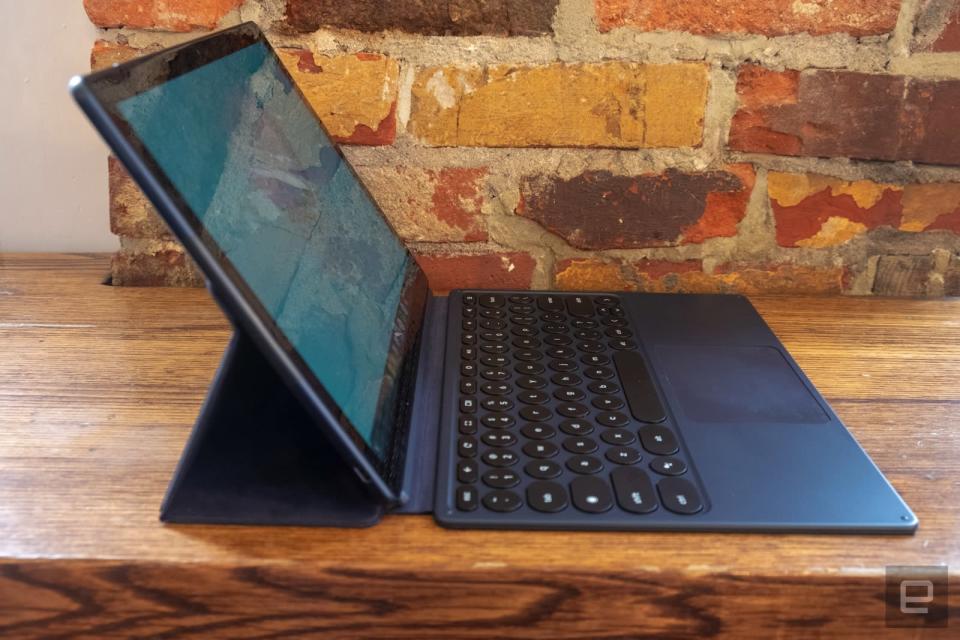
Keyboard folio
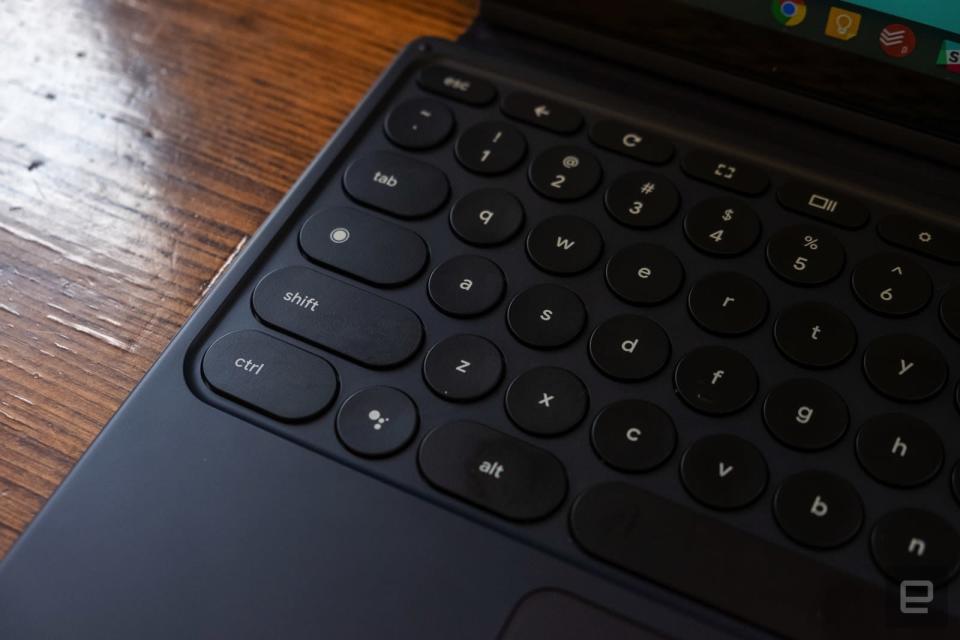
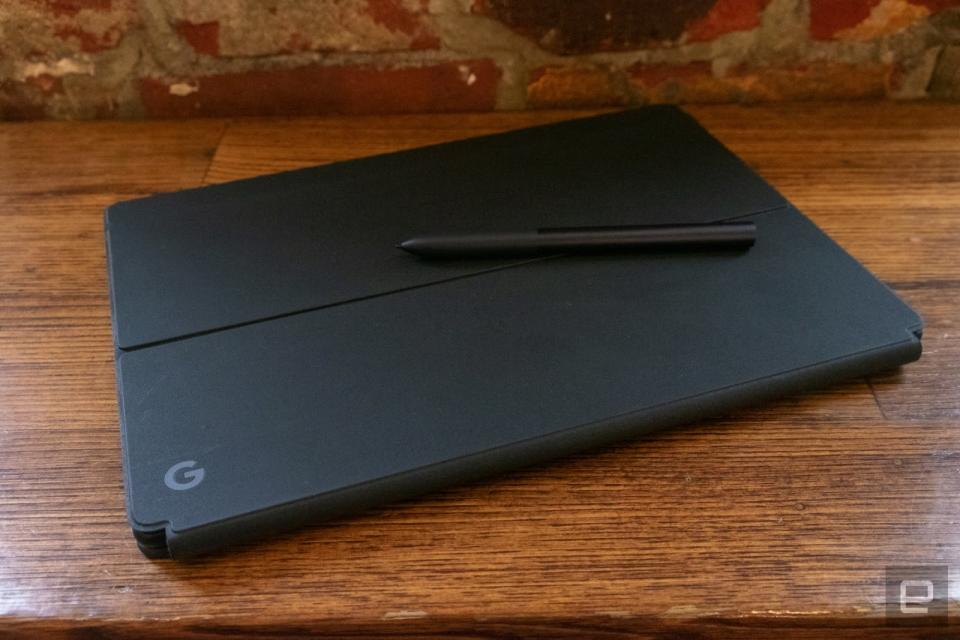
Software
Performance and battery life
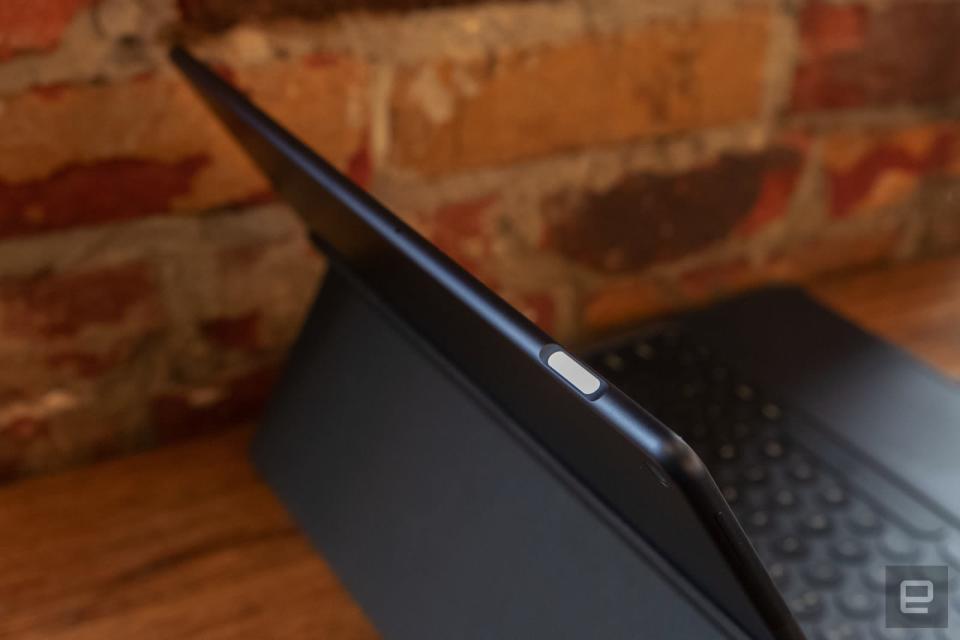
Configurations, pricing and the competition
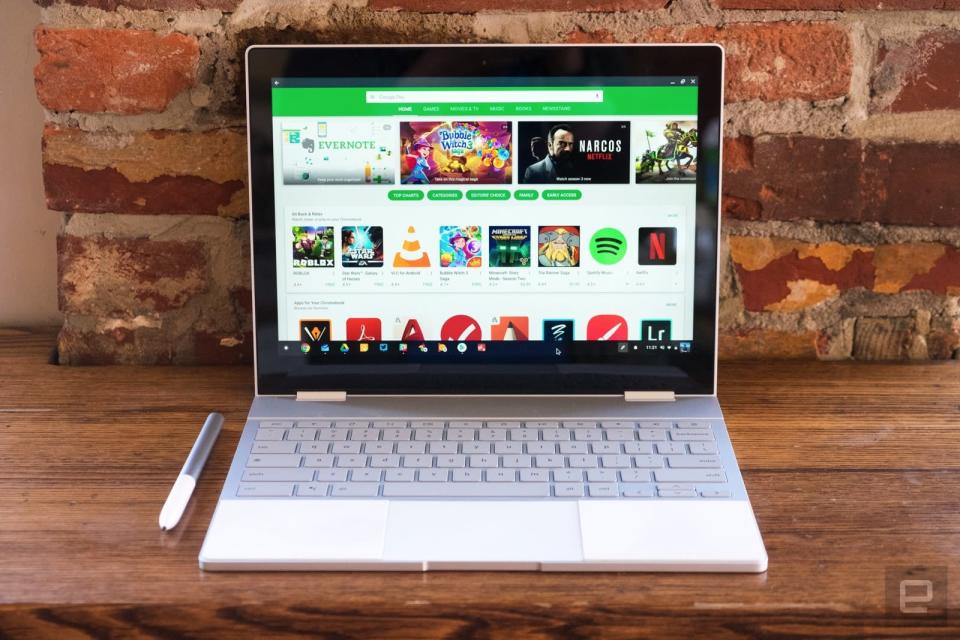
Wrap-up
